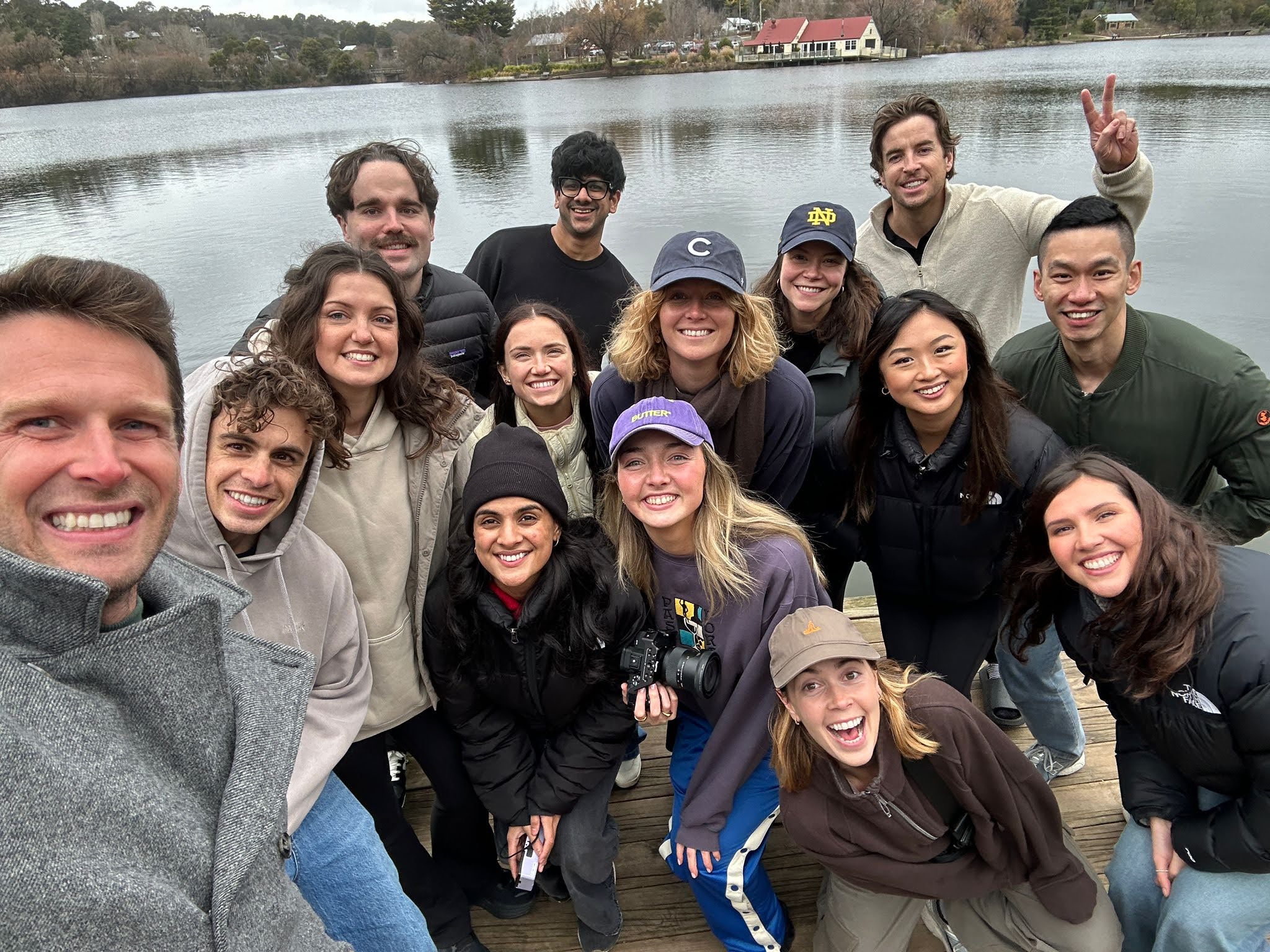Kirsty Traill is nothing short of a customer-success maestro.
She’s held roles as Vice President of Customer at Hootsuite and Chief Customer Officer at Snapfish, and is currently Chief Customer Officer at Shuttlerock. She’s also the brains behind our new Customer Success Fellowship.
Over the past two decades, she’s watched the customer success discipline originate and evolve.
And boy has it evolved.
Today, customer success plays a critical role in every startup’s growth trajectory and ultimate performance. What’s more, Customer Success Manager (CSM) roles seem to be popping up left, right and centre on job boards, and Startmate’s portfolio companies have verified this observation, and identify it as a major hiring need.
Yet, true customer success still remains elusive for many companies working to understand their client base, build or refine their customer success functions, and adapt these over time as their company grows.
If this rings true, don’t stress. This Q&A with Kirsty Traill will talk to all these points and more.
What draws you to customer success as a whole? Which piece of the puzzle do you love most?
“It’s incredibly fun to be able to engage with customers, understand their pain-points and then work on ways to solve these problems — and doing this at scale through the mechanism of an organisation is wildly fulfilling,” Kirsty tells me.
“Customer success is a very complex discipline. What I love about my job is that I get to manage the entire customer success journey. If you had to put me in a category, it would be a customer success generalist with a passion for each of the individual functions.
“I really love how all the functions are so interconnected.
“Consider this… Customer success for a client is heavily dependent on implementation, because if the implementation doesn't go well it can be difficult for the client to realise value. At the same time, you can do a lot in customer support around education, self-service and data analysis to drive innovation and influence the product roadmap, which then drives customer engagement, which then helps with retention. Then there are services, which helps with customer engagement and stickiness, and to drive further value. The more services a client buys, the more engaged they are, and the less likely they are to churn. Of course, customer success is predicated on ensuring you know and understand how customers define value, and delivering on that, and there is also the expansion and revenue component, which is the output of managing the discipline well. Lastly, happy customers will advocate on your behalf, driving more inbound customers to your company, which improves your sales and marketing efficiency. It’s a win-win-win-win scenario.
“It’s probably a really nerdy thing to say, but I find it really fascinating.”
How has the customer success discipline evolved?
“In many ways, customer success emerged from account management. But where account management is really about selling to signed customers, customer success is about developing long-term, mutually-beneficial partnerships with these signed clients, and helping them achieve their goals” Kirsty says.
“The biggest part of the discipline’s evolution has been moving away from the transactional nature of the relationship toward delivering value for customers over the sustained length of the partnership.
“It's become a much more strategic discipline as a result of that.”
With this in mind, can you define customer success in one sentence?
“Gainsight has a really good definition. They say CS equals CX plus CO,” Kirsty says.
“CS is obviously customer success, and CX stands for customer experience, which is all the different touchpoints in the customer journey that add up to the customer experience, whether it's the product, the people, the services, et cetera.
“CO stands for customer outcomes, which is the most important piece from my perspective.
“At the core of customer success is understanding what outcomes the customer wants to drive with your product or solution, and how the customer defines success in that regard, and then ensuring you deliver this over and over again.”
How does company size influence a CSM’s role and responsibilities?
“Most early-stage companies hire CSMs who are generalists to run what I’ll call ‘end-to-end’ customer success. They'll likely be responsible for the sales-to-service handoff, client onboarding and implementation, making sure the client sees and realises value, potentially managing support requests, and maybe even services, depending on how technically complex the product offering is,” Kirsty explains.
“As companies get to the Series A and B size, you start to see some of these functions getting split out — most commonly, implementation and support as a more technical function in a lot of cases.
“And as companies grow even further, you'll start seeing this evolve even further, with the hiring of true implementation specialists, CSMs, and customer support reps as well Often this is accompanied by an operations function, which is then followed by Customer Experience, Insight and Advocacy at later stages of a company’s growth.
“It's a fascinating evolution. It's very cool to manage and watch.”
Does and should sales have a place in the customer success toolkit?
“I think the broader question you're asking is ‘should a CSM be responsible for revenue expansion?’ That is the million-dollar question,” Kirsty says.
“If you've got a large number of low annual contract value (ACV) deals, it probably makes sense to have a customer marketing function, run a tech touch approach and try to automate a lot of the upsell motion. Because the deals are really small, their propensity to upsell is probably quite small too.
“When you look at mid-market and enterprise clients it gets really interesting. If you have a mid-market client with whom you already have a large share of wallet, the upselling of incremental products and services is probably better placed coming from a CSM — because they know and understand the account, they’ll position the expansion offerings in a really organic way without detracting or distracting from value realisation or true customer success.
“When you get into really, really large enterprise deals, you’ll see some companies have account managers who are exclusively responsible for upselling, and some with renewal managers, who are responsible for renewal and upsell. This is to enable the CSMs to spend their time mapping the account and truly ensuring clients realise value.”
“There is no hard-and-fast rule.
“If you want the TL;DR, it depends on the size and stage of the company and what kind of customer base they're selling to by ACV tier.”
What are some common misconceptions about customer success?
“That’s a great question. People sometimes conflate customer success and customer support. The biggest differentiator is that, when done right, customer success is proactive, and customer support is reactive,” Kirsty says.
“I see a lot of people and organisations running customer success functions through their inboxes, and effectively playing whack-a-mole. Let's face it, that isn't fun for anyone nor is it delivering maximum value to a client.
“Customer success is about proactively managing accounts. How can you develop customer or account health scores to identify leading indicators of value realisation and satisfaction, so that CSMs can proactively reach out if those indicators change for the better or the worse. Ideally you should have defined playbooks that help CSMs understand which plays to run (or actions to take) based on how those leading indicators are trending. That way you have a consistent customer experience and know your team is running plays based on defined outcomes that are best for the client’s ultimate success.
“If you’re in a customer success role and you are really reactive or constantly fire-fighting, you're probably doing it wrong.
“Another misconception is that customer success is just making customers happy. True customer success is about really understanding how customers define value and then delivering on that value over and over again.
“And finally, it isn’t purely transactional. If you’re just trying to leverage the relationship to upsell more products or services and hit metrics, you're not really understanding the core nature of what your customers want and need and how to deliver it for them.
“Customer success is about building long-term relationships and helping customers realise value over time. Ultimately your company should be the enabler of your client’s long-term strategic goals, and the more you can deliver against that, the stronger the partnership will become.”








